-
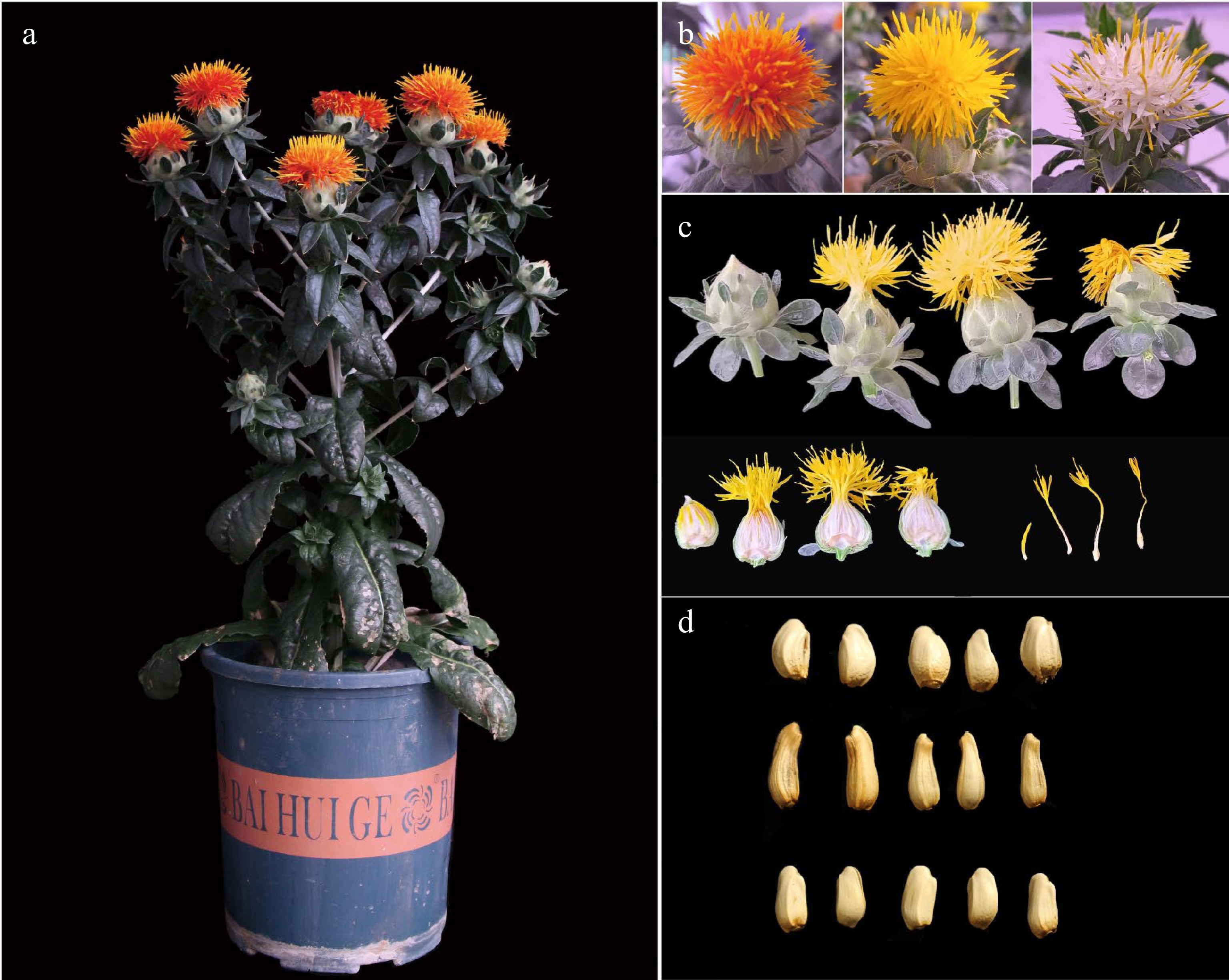
Figure 1.
Morphological development map of safflower. (a) The whole plant of safflower at the stage of blooming. (b) Main flower colors, red, yellow and white, emerging in different safflower varieties. (c) Main flower developmental stage, including closed buds at stage 1, a few small florets occurring at the center of the capitulum at stage 2, large florets occurr at the center of the capitulum and the ovules are enlarged at stage 3, and florets begin to wilt at stage 4. (d) Seed morphology among the different safflower varieties.
-
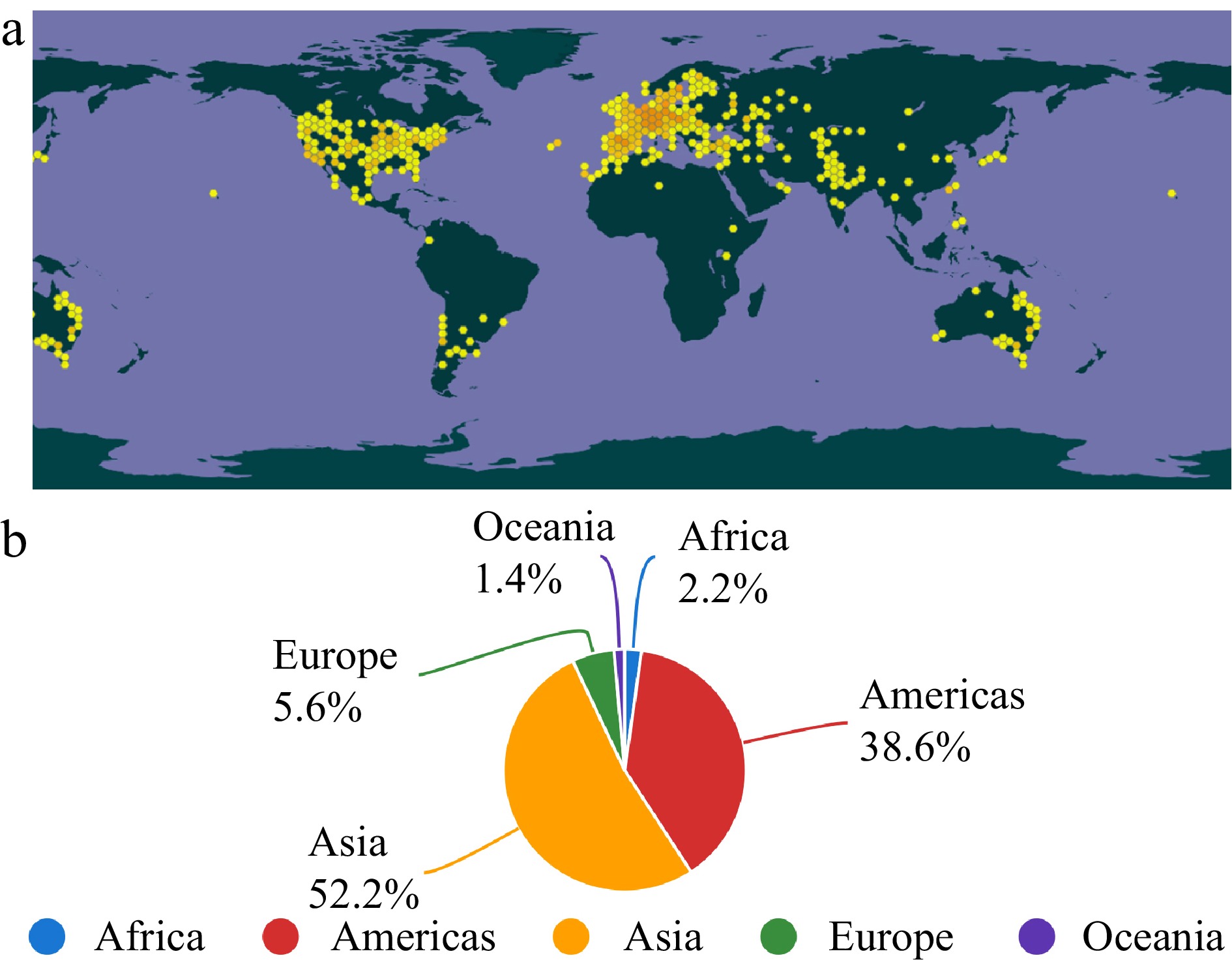
Figure 2.
The geographical distribution of safflower cultivation and production distribution of safflower seeds. (a) Recorded geographical distribution of worldwide cultivated safflower (Carthamus tinctorius L.) from 1999 until 2023. Note: Yellow dots indicate georeferenced occurrences. (b) The production distribution of safflower seeds from 1994 until 2021 recorded in FAOSTAT.
-

Figure 3.
Number of articles published on safflower flavonoids and safflower lipids in the past 10 years.
-
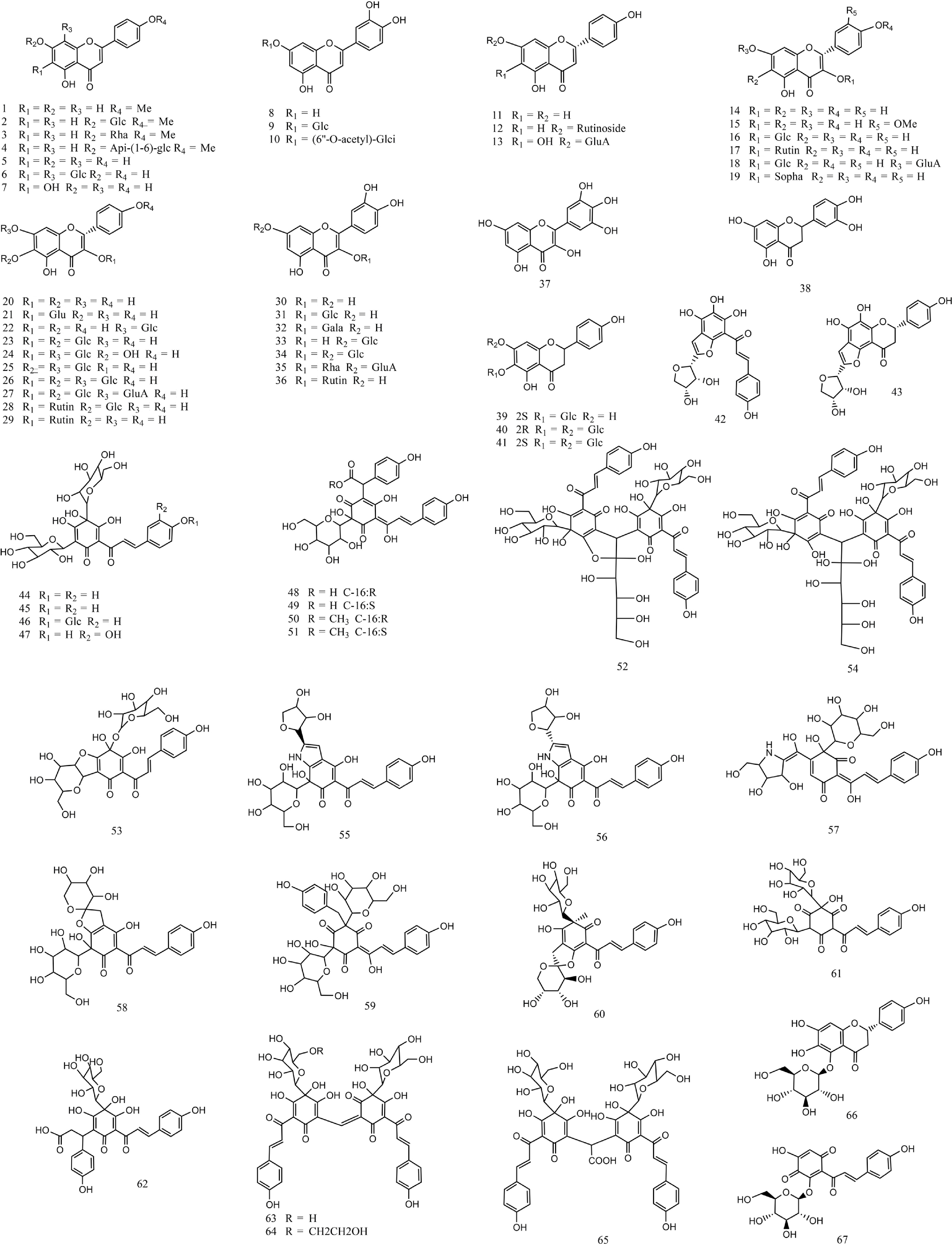
Figure 4.
The structural formula of 67 kinds of identified flavonoids from safflower.
-
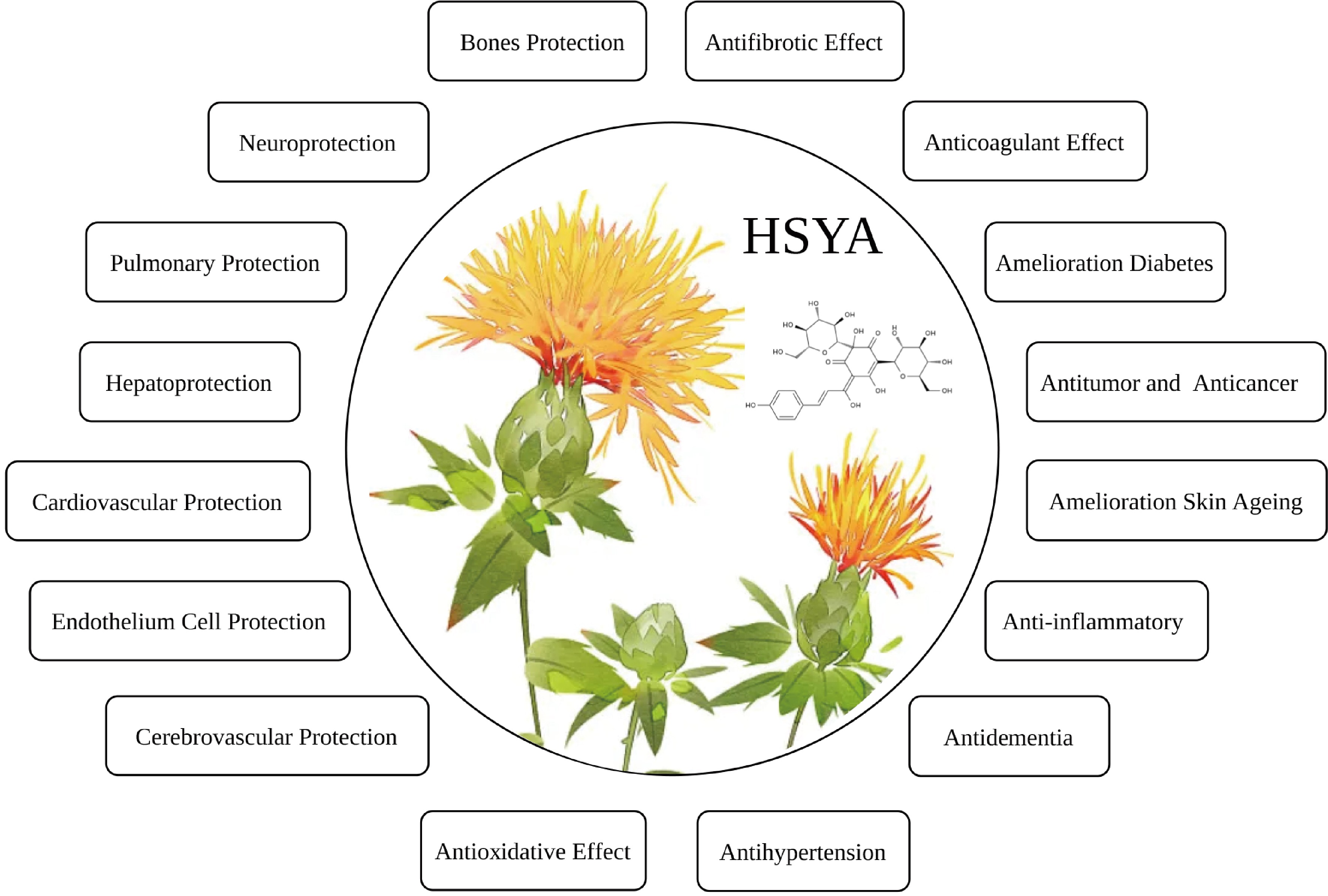
Figure 5.
Pharmacological activities of hydroxysafflor yellow A (HSYA).
-
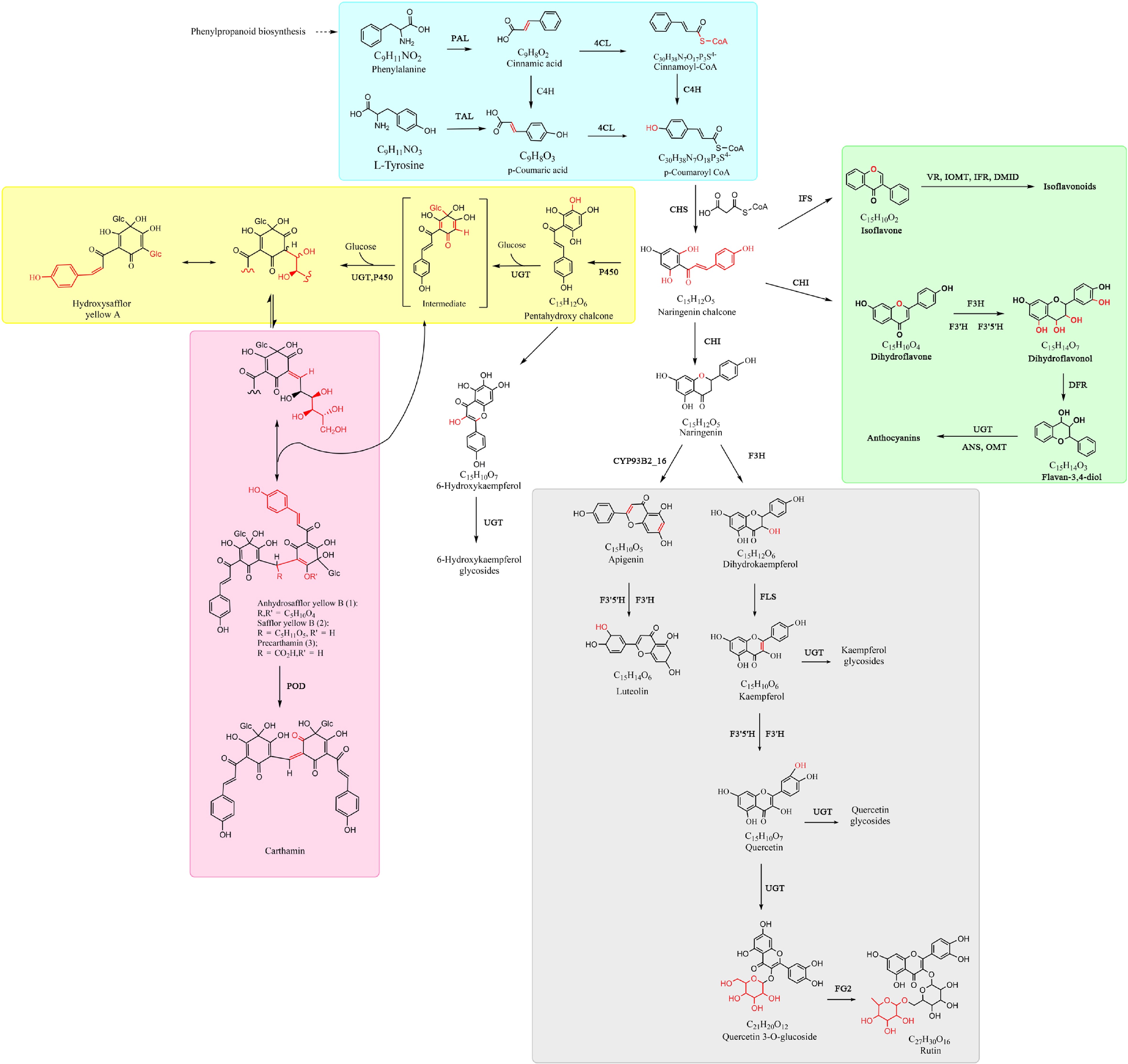
Figure 6.
Proposed pathway of flavonoid biosynthesis in safflower. The yellow-shaded box and red-shaded box indicate the unique flavonoids of safflower yellow and red pigments, respectively. Other color-shaded boxes represent the detected common flavonoids in safflowers and other plants. Note: The enzyme names and flavonoid compounds are abbreviated as follows: PAL, phenylalanine ammonia lyase; TAL, tyrosine ammonia lyase; C4H, cinnamic acid 4-hydroxylase; 4CL, 4-coumarate: CoA ligase; CHS, chalcone synthase; UGT, UDP-glycosyltransferase; P450, cytochrome P450; POD, peroxidase; CYP93B2_16, one P450 member; CHI, chalcone isomerase; IFS, isoflavone synthase; F3H, flavanone 3-hydroxylase; F3'H, flavanone 3'-hydroxylase; F3'5'H, flavanone 3',5'-hydroxylase; FLS, flavonol synthase; VR, vestitone reductase; IOMT, isoflavanone O-methyl transferase; OMT, O-methyl transferases; DMID, 7,2'-dihydroxy-4'-methoxyisoflavanol dehydratase; IFR, isoflavone reductase; ANS, anthocyanidin synthase; DFR, dihydroflavonol 4-reductase; FG2, flavonol-3-O-glucoside L-rhamnosyltransferase.
-
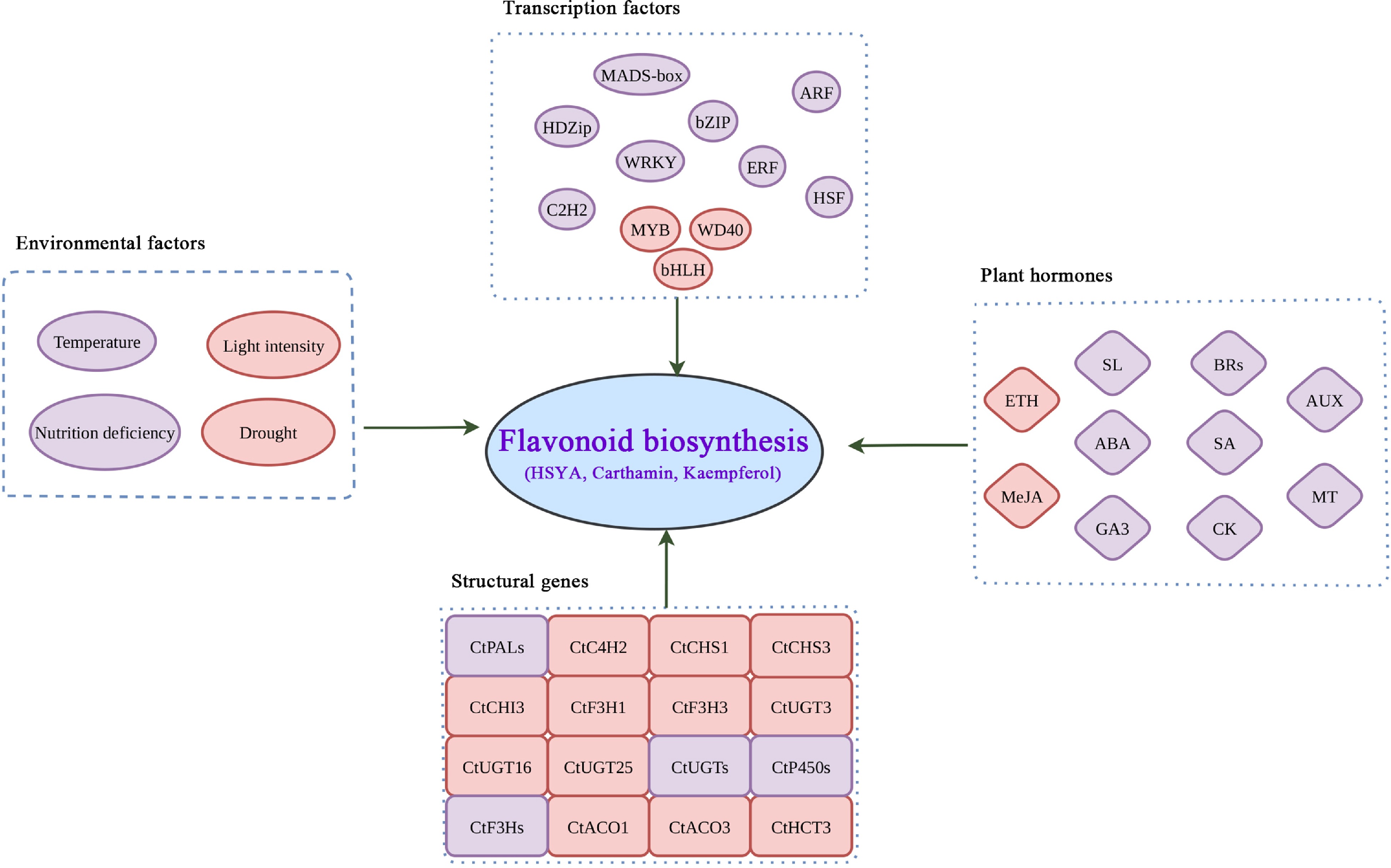
Figure 7.
Regulation on safflower flavonoid biosynthesis at multiple levels. The red shaded box represents the confirmed roles in safflower flavonoid biosynthesis, and the purple shaded box represents the confirmed roles in flavonoid biosynthesis of other plants.
Figures
(7)
Tables
(0)